Sounds and Vocalization of the Female Koalas
Despite being very calm and quiet in the forest, the female koalas do make some sounds and vocalizations as part of their lifestyle activities. In fact; it is their rarest way of communicating with other koalas, joeys and dominant males within their territory. These sounds and vocalization of the female koalas vary according to various situations and scenarios.
Female koalas are usually quite but they are capable of creating certain sounds and vocalization. These sounds and vocalizations are dependent upon various situations and scenarios.
Furthermore; female koalas' vocalizations can also be differentiated from the vocalization of the male koalas because their (females) vocalizations are usually lower-pitched. So far; the female koalas have been witnessed to vocalize like snarling, bellowing, grunting, screaming and even wailing as well. This article tends to sift through different situation in which the female koalas create key vocalization and elaborate secrets behind such vocalization.
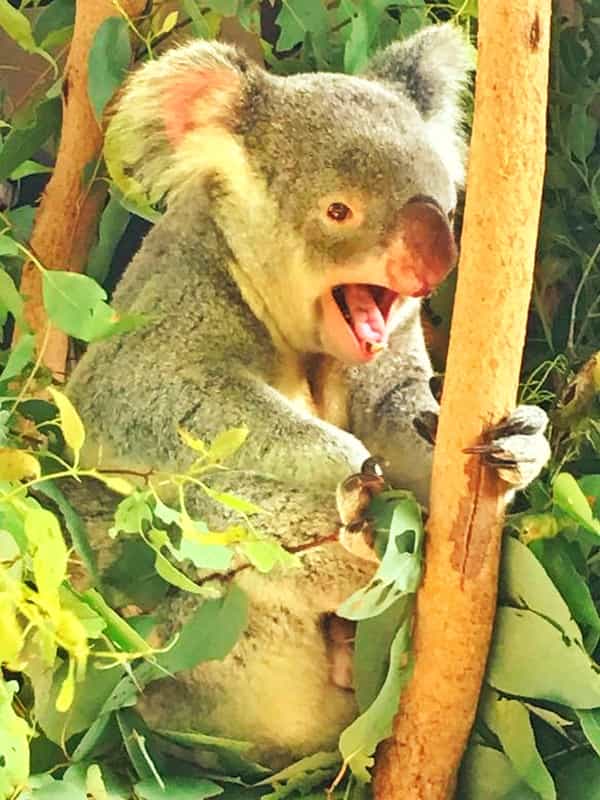
The vocalizations of the female koalas are mostly common and even dominant during the mating season of koalas. Even though the male koalas initiate the loudest vocalization during the mating season but female koalas are very receptive to such vocalization and respond accordingly (though not with loudest vocalization). According to the koala observers, the female koalas create a low-pitched snarled and bellowing voice upon hearing the loud vocalization of the male koalas.
During the mating season, the female koalas create a low-pitched snarled and bellowing vocalization. Their vocalization gets louder, when the male koalas start approaching the female koalas for mating.
The snarling and bellowing vocalization of the female koalas increases as the male koalas approaches near the female koalas for mating. During the mating season, the female koalas are also known to create a very loud wailing sound, when they are harassed by the male koalas and they don't want to mate.
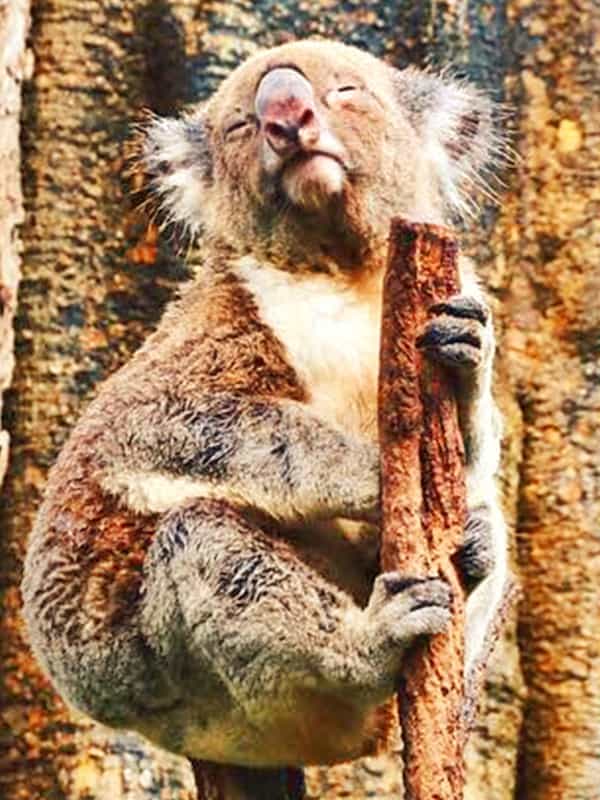
On the other hand; the female koalas are also known to create an aggressive vocalization against their grown-up joeys during the weaning process. Since; koalas prefer to live a solitary life, therefore such vocalizations from the female koalas are very common during the time of weaning. The message within these aggressive vocalizations is clear for joeys i.e., leave and establish your own territory.
The female koalas are known to make aggressive vocalization towards their grown-up joeys. The message in such vocalizations is clear i.e., leave the area and live on your own in another territory.
However; when the koala joeys are very little and they are dependent on their mother, they are known to make soft clicking and gentle murmuring as well. The female koalas are very caring for their joeys and if a joey makes a squeaking sound, they quickly respond and go near them to have them cling on their back or inside their pouch.
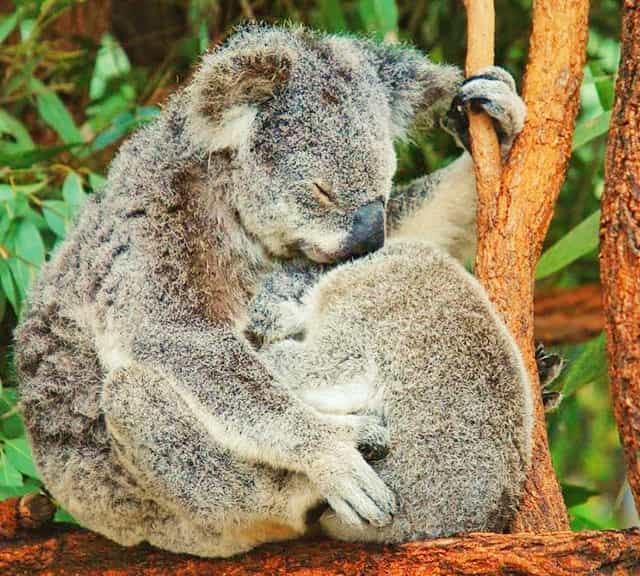
In another scenario, the female koalas may also make a loud grunting voice when they feel threatened or being attacked. Koalas feel threatened when their predators such as dingoes, eagles, eagles, owls and dogs are around their tree or within their territory.
Loud grunting vocalizations from the female koalas are very common when they sight a predator within their territory. The female koalas grunt loudly to scare their predator or to alert other koalas.
The female koalas with their young ones are the ones that are worried the most and apart from loud grunting, they may go at any length to expel predators from their territory. Such vocalizations usually alert other koalas within the territory, or let the predators know that they have been busted. Furthermore; it can be the part of a deliberate tactic at the female koalas' end to scare their predators.

As compared to the male koalas, the female koalas are considered less vocalized. Usually the female koalas have the lower-pitched vocalization as compared to the male koalas. Their vocalization is classified as an eerie sound or a scream. Male koalas are highly territorial and loud vocalization is one their key tools to let other know about their dominance within the area.
Female koalas are considered less vocalized as compared to the male koalas. The male koalas keep the high profile within the territory while females keep the lower profile.
Male koalas make loud vocalizations during the breeding season to advertise their presence to the female koalas. On the other hand; the female koalas are also territorial but they are seldom seen fighting for the territory. Furthermore; the female koalas tend to keep a low profile within their territory and that's why they are considered less vocalized as compared the male koalas.
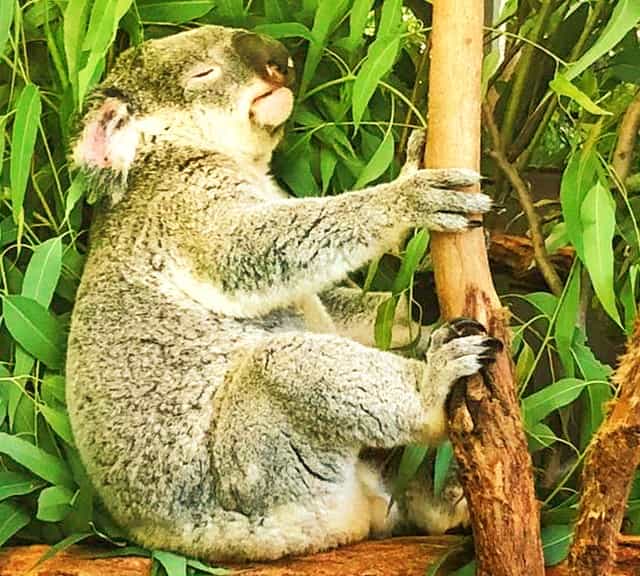
Lastly; after the breeding season one may hardly hear a female koala making any vocalization at all. If a female koala doesn't have a baby in its pouch, it may not vocalize at all unless she is in some kind of a distress. This should be considered normal because koalas are classified as the solitary animals and they spend more than 93 percent of their time alone on their own and in calm.
Female koalas may not vocalize at all during the non-breeding seasons. They tend to spend their time on their own eating leaves and sleeping for more than 20 hours per day.
Furthermore; koalas have to sleep more than 20 hours per day to keep their metabolism at an extremely lower pace. Therefore; during the non-breeding season a female koala may not be heard vocalizing at all.
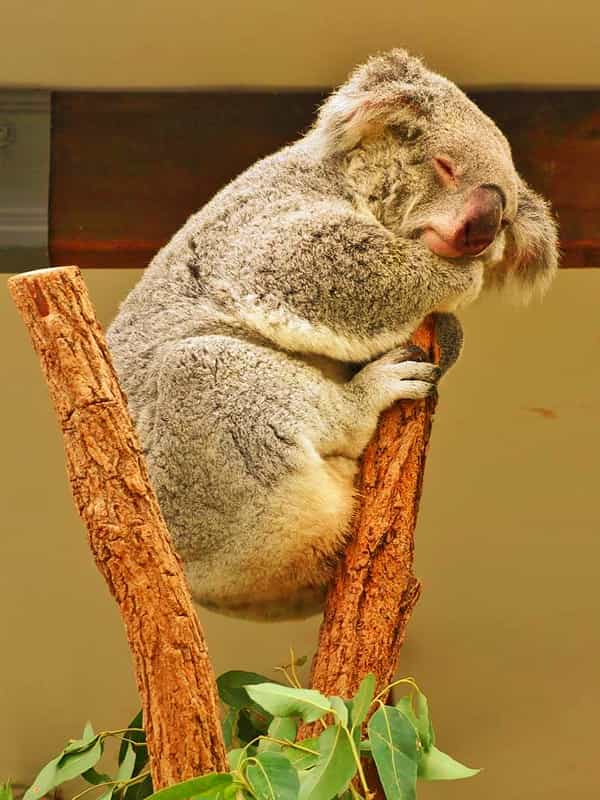
Liger Articles
Marsupials vs. Placental Mammals
Koalas are most popular animals in Australia
Koalas are more popular as compared to Kangaroos
Koalas and their Dominant Nose
Button Shaped Fascinating Eyes of the Koalas
Core Recognizing Features of Koalas
Koalas are the largest tree climbing Mammals in Australia - Koalas as Arboreal
Sizes of Koalas from Queensland, Australia
Sizes of Koalas from Australia's Victorian Origin
Difference between Queensland and Victorian Koalas
Average Weights of Male Koalas
Weighing Male vs Female Koalas
Male Koalas have Loudest of voice among all Australian Mammals
Origin of Koalas & their Evolution
Koalas Population Increased at the end of 20th century
Historical Evolution of the Koalas - A Physical Perspective
Koalas and their Aboriginal and Native Names
It Took 10 years for Aboriginal Australians to Spot and Recognize Koalas
Koalas Live Hardest and Toughest Lives Among all animals
Koalas Tooth Decay through its Abrasive Diet
Koalas Diet is Fully Poisonous and Toxic
Koalas' Food Eucalyptus has Lower Nutrition
Koalas have Lower Energy Levels
Koalas - When Occasionally Spotted on other Leaves for their Food
Why Koalas drink little or no Water?
Koalas & their Advanced Digestive Mechanisms
Why Koalas Sleep more than 20 Hours a Day?
Koalas Lack Energy and Strength
Koala's Tooth from Growth till Tooth Decay
Young Koalas are Better Chewers as Compared to Mature and Elderly Koalas
Why Most Koalas Die of Starvation?
Heat Exhaustion and Heat Strokes among Koalas
Do Koalas lack Intellectual Abilities?
Koalas and their Sense of Smell
Koalas Love Fresh Eucalyptus Leaves as their Food
Koalas' Eucalyptus Leaves' Preferences during summers and Winters
Koalas' Preference for Leaves Having Higher Nitrogen Levels
Koalas Prefer Big Eucalyptus Trees and Love to Stay at Trees' tops.
Koalas Prefer to Live in Areas that have Good Soil and Fertile Lands
Koalas' Per Day Food Consumption
Koalas Food Consumption Depends upon their Body Size
Lactating Female Koalas Consume More Food as Compared to the Normal Female Koalas
Koalas Consume More Food during Winters as Compared to Summers
Female Koalas are very Selective Regarding their Leaf Selection and Food Consumption.
A Baby Koala Joey Lives in her Mother's Pouch for 8 to 9 Months
Gestation Period within Female Koalas
Breeding Behaviors of the Female Koalas
The Size of the Baby Koala Joey at the time of its Birth
Weight of the Baby Koala Joey at the Time of its Birth
At Birth the Baby Koala Joey Travels from Cloaca into their Mother's Pouch
Newborn Koala Joeys have Well-Established Sense of Smell
Koala Joey keeps his Head Inside its Mother's Pouch for 6 Months
Complete Shape and Body Development of the Koala Joey
Pap - The first solid food of the Koala Joeys
When Does Tooth Emerge for Baby Koala Joey?
Aggressive Behavior of Mother Koalas towards their Joeys
Queensland Offers Less Nutritional Values for Koalas
How long does Koalas live? Age of the Koala
Female Koalas Live More than Male Koalas
What is the Average Age of the Male Koala?
Average Ages of the Female Koalas
For How Long a Female Koala can Give Birth to the Koala Joeys?
How many times female Koalas give birth?
Koalas and Australia's Bushfire
Koalas' fur quickly gets rid of rain water
Koalas Resting and Sleeping Postures and Positions during the Hot Summer Seasons
Winter Season and Sleeping Postures of Koalas
Koalas' Urination during Summer and Winter Seasons
Koalas and their Specialized Claws
How does a Koala regulate its Body Temperature?
Food Consumption and Feeding Timings of the Koalas
Koalas Always Prefer Eucalyptus Leaves from the Tree top
How does a Koala Grooms itself?
Koalas' Territories and ranges within Australia's Victorian Areas
Koalas' Territories and Ranges within Australia's Queensland Areas
Behavior of the Alpha Dominant Male Koala
Aggressiveness of Female Koalas
Scent Marking Behavior of the Male Koalas
Mating Strategy of the Male Koalas
Fights and Territorial Encounters of Male Koalas
Sounds and Vocalizations of Male Koalas
Sounds and Vocalization of the Female Koalas
Koalas and their Facial Expressions
Breeding Ages of the Male and Female Koalas
Factors Influencing the Success of Koalas' Fertility Rates
Behavior of the young and adolescent Koala Joey
When Does a Mother Koala Says Goodbye and Leaves the Young Koala Joey?
Playful Behavior of the Young Koala Joeys
Koalas - Mating Season and Mating Months
Koala Informationen, Bilder, Neuigkeit, und Erforschung
Коала - сумчатый млекопитающий